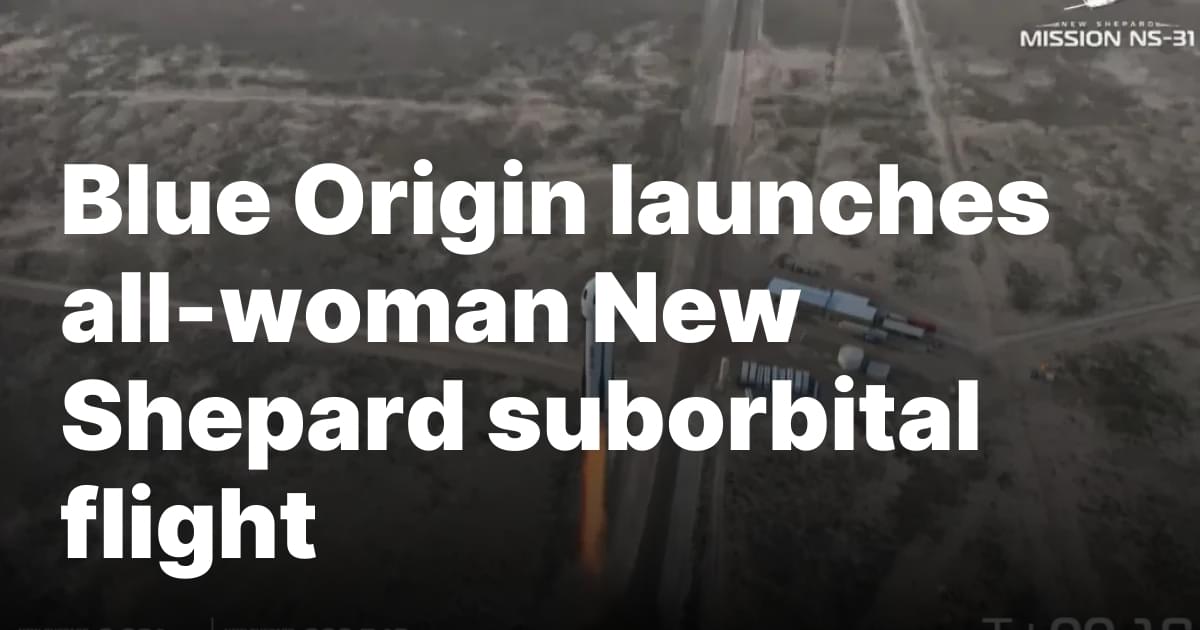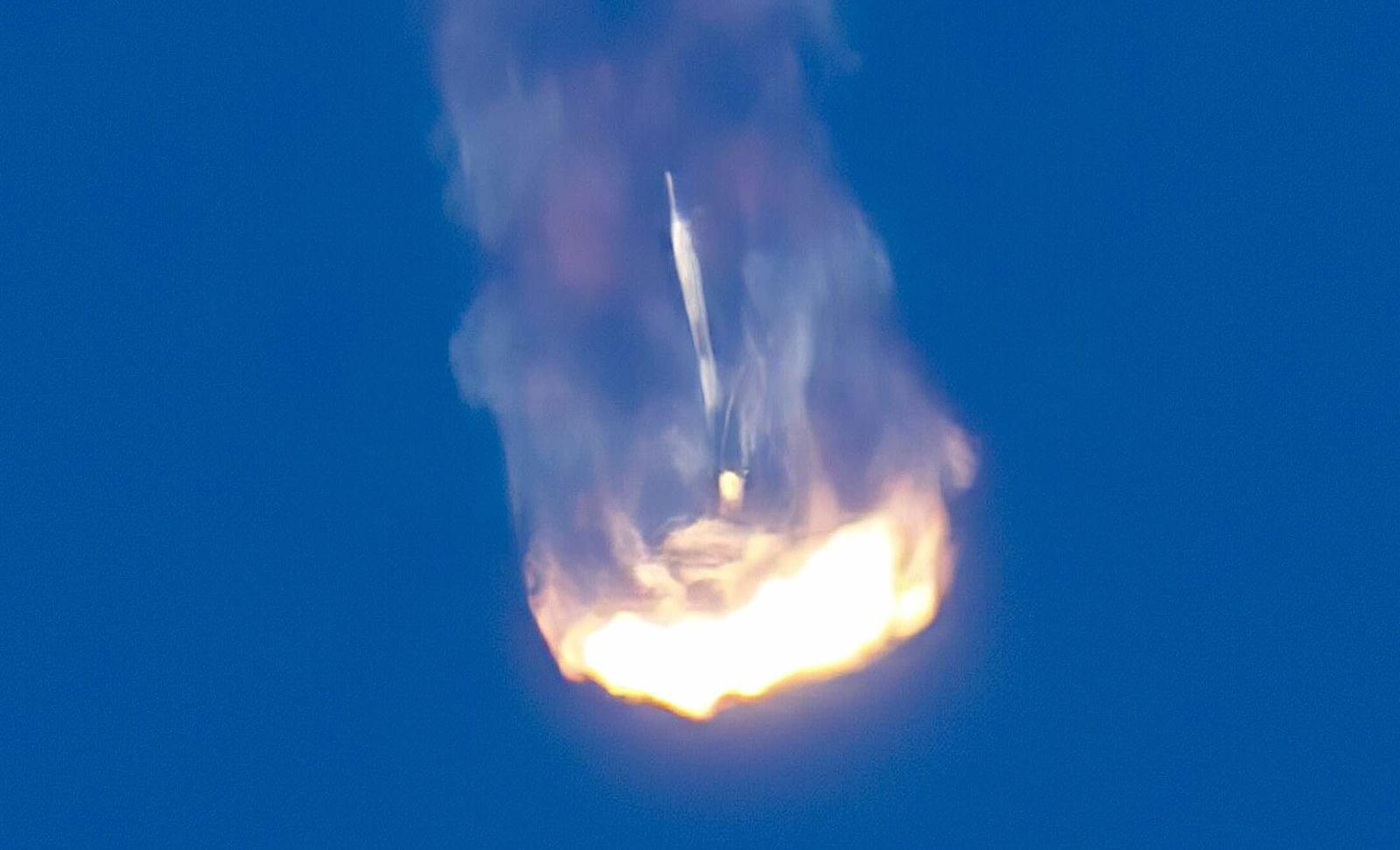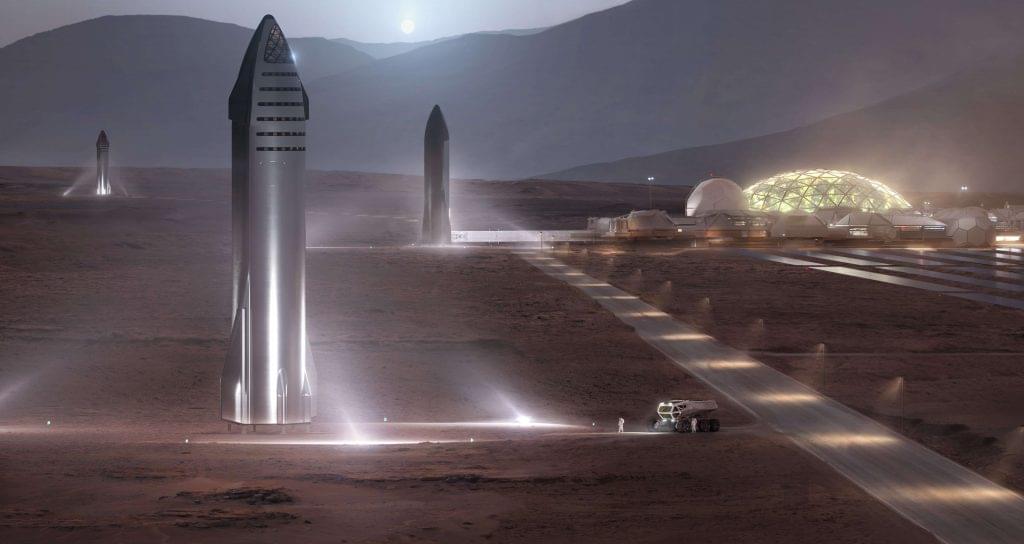Nanobots aren’t just microscopic machines—they could come in countless shapes and sizes, each designed for a unique purpose. From medical nanobots that repair cells to swarming micro-robots that build structures at the atomic level, the future of nanotechnology is limitless. Could these tiny machines revolutionize medicine, industry, and even space exploration? #Nanotech #Nanobots #FutureTech #Science #Innovation …
Category: space travel – Page 23
SpaceX Drops Bombshell Upgrade for Starship Pad B to Ditch Water Deluge system
🚀 Q: What are the key features of SpaceX’s new flame trench at Pad B? A: The 80% complete flame trench features 5 diverter supports, 2 flame buckets, and water pipes for cooling and exhaust management, enabling rapid Starship launch turnarounds by up to 70% compared to pads without a trench.
🔥 Q: How does the flame trench manage Superheavy booster exhaust? A: It channels 3,000°C exhaust from 33 Raptor engines using a 10-20m deep, 10-20m wide, refractory-lined concrete channel with a steel deflector to reduce recoil damage by 60%.
💧 Q: What role does water play in the flame trench system? A: The trench uses 1M L water per launch to cool the trench, absorb 10–20 MJ/m² heat flux, and reduce 30–50% acoustic energy, preventing structural cracks or instability of the rocket.

Blue Origin launches all-woman New Shepard suborbital flight
WASHINGTON — Blue Shepard launched six women, including a pop star and TV show host, on a suborbital flight of the company’s New Shepard vehicle April 14.
New Shepard lifted off at 9:30 a.m. Eastern from the company’s Launch Site One in West Texas after a problem-free countdown. The vehicle’s capsule, RSS Kármán Line, reached a peak altitude of 106 kilometers before landing 10 minutes and 21 seconds after liftoff.
The NS-31 mission, the company’s 11th crewed suborbital flight, flew a routine profile but with a unique complement of spaceflight participants. It was the company’s first mission to carry only women, and the first all-woman spaceflight of any kind since Valentina Tereshkova became the first woman in space on a solo flight in 1963.
SpaceX Engineers Are Racing To Build a Smarter Stronger Energy Future
🏭 Q: What upgrades are needed for the grid to handle increased energy demand by 2050? A: The grid needs to be upgraded to handle tripled energy throughput by 2050, requiring more power plants, wires, transformers, and substations to support increased demand from EVs, heat pumps, and AI. Innovative Charging Solutions.
🔋 Q: How do Electric Era’s charging stations reduce grid capacity requirements? A: Electric Era’s charging stations with batteries buffer the load, reducing grid capacity requirements by 70% and allowing for faster deployment in better locations like retail amenities and gas station parking lots.
⏱️ Q: What capabilities do Electric Era’s charging stations offer for energy management? A: Electric Era’s stations offer time of use charging and virtual power plant capabilities, storing energy upstream and providing the best time of use pricing to customers, making them more efficient and cost-effective. Energy Storage and Distribution.
☀️ Q: How can the “duck curve” phenomenon be addressed? A: The duck curve can be solved by building extra energy storage to store excess electrons, such as Tesla’s 10–12 GWh deployed last quarter and Electric Era’s smaller storage at more localized locations.
🔌 Q: What is the transformer scarcity problem and how can it be addressed? A: Transformers are being hoarded due to scarcity and strategic importance, exacerbating grid infrastructure issues. A strategic transformer reserve is needed to address this problem, according to Quincy from Electric Era. ## ## Key Insights ## Grid Infrastructure Challenges.
🔌 The 130-year-old grid infrastructure is antiquated and breaking apart, making it expensive and challenging to upgrade for increased energy demand.
Robots In Space
Join aerospace engineer Mike DiVerde as he explores the fascinating world of robotic spacecraft through NASA’s remarkable Chandra X-Ray Observatory. Discover…
CERN Is Secretly Collapsing Quantum Fields to Alter Local Gravity
Discover how CERN’s research into quantum fields could revolutionize our understanding of gravity! This deep dive explores the theoretical possibilities of manipulating quantum fields and their potential connection to gravitational forces. From Einstein’s predictions to cutting-edge experiments at the Large Hadron Collider, we examine what’s really happening at the frontier of physics research.
Learn how quantum gravity research could potentially transform:
Space travel and propulsion systems 🚀
Revolutionary energy production ⚡
Medical applications and treatments 🏥


Mars Next and “All of the Above”
As the next administration takes shape, countless voices are vying for influence over the future of America’s space program. I’d wager one in particular — someone apparently very close to the President-elect — might be suggesting a bold new direction: “Sir. Forget racing China to the moon,” Elon Musk may be saying. “We’re almost ready with Starship. Announce we’ll launch humans to Mars by 2029 — the Apollo anniversary. You’ll go down in history! You’ll be as big as Kennedy!”
If I had that access, it’s exactly what I’d be saying.
Think about it. SpaceX is making remarkable progress on Starship. If they can overcome FAA regulatory hurdles, they could have a revolutionary, reusable Earth-to-space system operational within a year. The next step, in-orbit refueling, could take another year or two to master. By 2028, Starship could be ready for missions to the moon, Mars, or beyond. Right behind it will be Jeff Bezos’ Blue Origin with New Glenn.

Artemis 2.0: A model for really winning the new moon race
Right now, the remains of three private spacecraft rest on the moon, with one more lost in Earth orbit. And that is incredible.
First came Israel’s Beresheet, which crashed on the lunar surface in 2019. Next was Astrobotic’s Peregrine, which suffered an anomaly and was ordered to burn up in Earth’s atmosphere in early 2024. Then, Intuitive Machines’ Odysseus became the first functioning private vehicle to land on the moon — though it landed harder than expected and didn’t live as long as planned. The company tried again with Athena earlier this month, which touched down on its side but still completed key mission objectives before running out of power. Finally, Firefly Aerospace’s Blue Ghost crossed the finish line with a fully successful landing — alive, transmitting and delivering incredible images and other results.
And this is just the beginning. Soon, the U.S.-Japanese iSpace team will attempt its own touchdown, marking yet another milestone in what is quickly evolving into a true private-sector space race.

Moon Dust to Power: The Solar Tech That Could Fuel Space’s Next Giant Leap
Scientists have created solar cells using simulated Moon dust, potentially solving one of space exploration’s biggest challenges: how to generate reliable energy far from Earth.
These new cells, made with perovskite and moonglass, are lighter, cheaper, and more radiation-resistant than traditional space solar panels. Even better, they can be made using lunar materials, drastically reducing launch costs and making future Moon bases more feasible. If successful in real lunar conditions, these Moon-made solar panels could power entire off-world colonies.
Powering Space with Moon Dust.